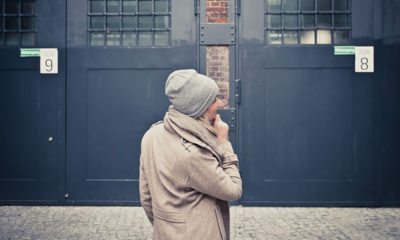Success Advice
An Easy to Follow 8 Step Strategy for Creative Problem Solving
A complete process of creative problem-solving encompasses finding problems, developing creative solutions, and implementing your solutions

No matter where you look around the world today, entrepreneurs face a common challenge: The need to stand out from their competitors and win over customers.
The creative and socially changed economy of the 21st century has added speed and complexity to the game of business. Competitors are now springing up in all corners of the world.
International supply chains and digital technologies make it possible for anyone with an internet connection to start their own business and they can conduct business with anyone, anywhere in the world. While this situation can be stressful, it can also be liberating.
People have the opportunity to chart their own course in the world like never before. Whether starting their own company or working inside one, people have to think and behave like entrepreneurs. This is easier said than done, because the industrial model of business worked quite well for so many people for a long time.
Churning out incrementally improved products for existing customers over a lifetime ensured steady growth and dependable returns on investment. However, such models are simply not effective today.
We live in a world of customized experiences, choice, easily accessed research and knowledge, and high expectations. Customers expect more from companies today, which requires entrepreneurs to uncover people’s real problems and design elegant solutions to those problems.
Yet, many very smart people don’t know what steps to take to come up with, fine-tune, and execute that next big idea.
Entrepreneurial activity is first and foremost about creative problem-solving. No matter how great your technology or idea, if it doesn’t solve an important problem for enough people you have little chance for success.
Think of the many problems that challenge your potential customers. Some of these problems might be obvious, but a good solution hasn’t been discovered yet. A complete process of creative problem-solving encompasses finding problems, developing creative solutions, and implementing your solutions.
To master innovation, incorporate this eight-step framework:
1. Problem finding
Start by sensing and anticipating customer problems. But make sure you don’t prematurely assume the real problems of the real customer without investigation. Questions to ask may include: “What goals do they fail to attain year after year?” or “What problems do they have that they’d like to avoid?” Don’t begin to solve the problem at this point.
2. Fact finding
The purpose of fact finding is to obtain better clarity about the customer’s problem. List as many simple, specific, and clear answers as you can to questions regarding why this problem exists — as well as what you might be assuming to be true. Merge your own observations and ideas with any available research.
3. Problem definition
Continuing to set aside judgment, list several optional problem definitions. Phrase each problem definition as a challenge beginning with “How might customers…?” Let’s say you’re starting a travel company. A challenge might be: How might customers have a better travel experience?
Then use the “Why; what’s stopping” analysis: “Why would customers want this challenge to be met?” and “What’s stopping customers from having this challenge met?” As you spend time on this analysis, you’ll better understand the customer problem space.
“Life is a series of problem-solving opportunities. The problems you face will either defeat you or develop you depending on how you respond to them.” — Rick Warren
4. Idea finding
Now you turn from the “what’s needed” to the “what’s possible” side of the business concept by converting customer challenges into company challenges. Change the “How might customers…?” into “How might we…?” Brainstorm simple, concise, radical ideas that you can build on.
5. Evaluate and select
Evaluate your list of potential solutions. Then list at least 15 potential criteria — specific, clear, and simple — to use in measuring their worth. This could include material cost, manufacturing time, ease of finding committed suppliers, etc.
Rank the criteria for each solution idea. Use the totals to guide your final selection. Importantly, ask: Will the solution be truly desirable to the customer? Is it technically feasible to produce and deliver the solution? And, is it economically viable to produce and deliver?
6. Planning action
Imagine what single action step you must first take to implement your solution. Next, consider how it will be done — when, where, and by whom. Think of further actions steps that need to be carried out, leaving room for creativity as your action plan unfolds. With your plan of attack, you’re ready to gain further acceptance of your concept from others.
7. Gaining acceptance
It’s likely your action plan includes getting support or approval from at least one person or company. List three benefits this person might derive if your idea made it to market — and how you can prove the benefit.
Also list at least three objections you anticipate this person might raise, and how you would overcome the objection. This step is a way to refine a business model that can be shown to investors.
8. Taking action
Finally, consider what might prevent you from taking the first step in your action plan. Then come up with three ideas for overcoming it. Go ahead and carry out your action step now that you know how to overcome any impediments. Repeat this step for each action in your plan.
This entrepreneurial approach is right for today’s world. It supports innovation in an economy and world where empathy, creativity, smart risk taking, engagement, and savvy execution are needed to thrive and flourish. This framework allows you to take charge of your future and connect deeply to the world around you — just as an entrepreneur should do every day.
Life
10 Research-Backed Steps to Create Real Change This New Year
This New Year could finally be the one where you break old patterns and create real, lasting change.

Every New Year, we make plans and set goals, but often repeat old patterns. (more…)
Change Your Mindset
The Silent Skill That Makes People Respect You Instantly
What truly earns respect and why most people go about it the wrong way

Everybody craves respect but not everyone earns it. Some people believe that a title, years of experience, or a position of authority automatically entitles them to respect. (more…)
Entrepreneurs
The Essential Skills Every Entrepreneur Needs In 2026
Success in the digital age isn’t about luck. It’s about mastering the skills that separate dreamers from doers.

When I was 22 years old, I started my first side hustle as a ghostwriter. (more…)
Did You Know
The Success Patterns You Inherited (And Didn’t Notice)
Your family history may hold the key to why you think, act, and feel the way you do today.

Who are you? Your experiences and your family’s narratives and legacies contribute to your identity. Your ancestry contains individual traits and forces that have been inherited over the years. It also carries the fights and victories of your forebears and older family members. (more…)
-

 Personal Development4 weeks ago
Personal Development4 weeks agoThis Silent Habit Might Be Sabotaging Your Career
-

 Business4 weeks ago
Business4 weeks agoWhy Your E-Commerce Fulfilment Is Probably Broken (And How to Fix It)
-

 Shift Your Mindset3 weeks ago
Shift Your Mindset3 weeks ago11 E’s That Define Every Great Leader And Why Most People Miss Them
-

 Did You Know3 weeks ago
Did You Know3 weeks agoThe Success Patterns You Inherited (And Didn’t Notice)
-

 Business3 weeks ago
Business3 weeks agoThe Hidden Money Pit in Your Operations (and How to Use It)
-

 Entrepreneurs2 weeks ago
Entrepreneurs2 weeks agoThe Essential Skills Every Entrepreneur Needs In 2026
-

 Change Your Mindset2 weeks ago
Change Your Mindset2 weeks agoHow to Turn Your Mind Into Your Greatest Asset (Instead of Your Enemy)
-

 Change Your Mindset1 week ago
Change Your Mindset1 week agoThe Silent Skill That Makes People Respect You Instantly
























